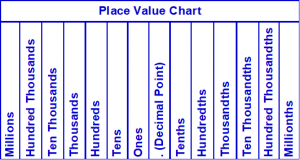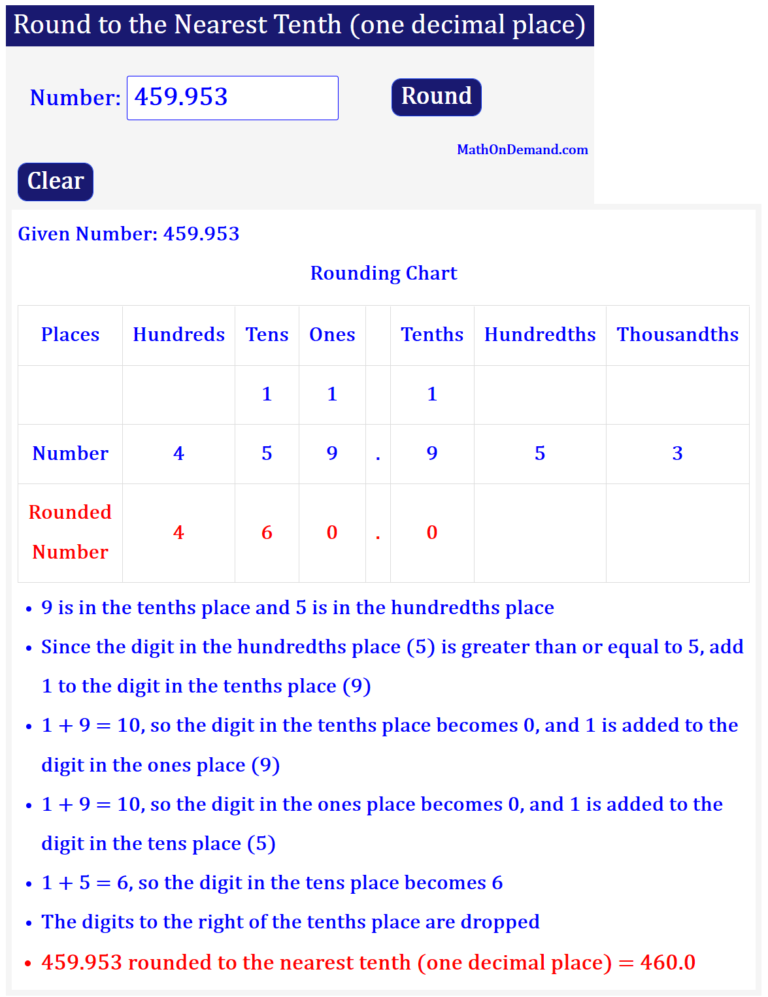As illustrated below and by other available solutions, this application will round a decimal number to the nearest tenth (one decimal place) with the aid of a rounding chart.
Students in the 6th grade should be able to round to the nearest tenth (one decimal place) under Common Core and Texas Essential Knowledge and Skills standards. From a practical standpoint, rounding a number to the nearest tenth provides a meaningful estimate of the actual value of a number. For example, there is very little distance between an athlete who can run a 4.4 40yd dash and one who can run a 4.405. In order to round a number to the nearest tenth (one decimal place), the digits in the tenths place and hundredths place must be identified. In other words, knowledge of the places digits occupy in a number is essential to the rounding process.

If the digit in the hundredths place is greater than or equal to 5 , then 1 is added to the digit in the tenths place (rounding up). If adding 1 to the digit in the tenths place results in a sum of 10, then the digit in the tenths place becomes 0 in the rounded number, and 1 is added to the digit in the ones place in the number entered. Notably, this process may repeat for successive digits in places to the left of the ones place if adding 1 to the digit in the ones place results in a sum of 10.
On the other hand, if the digit occupying the hundredths place in the number entered is less than 5, then the digit in the tenths place does not change in the rounded number (rounding down). And the digits to the left of the tenths place do not change. However, the digits to the right of the tenths place are dropped in all cases.

